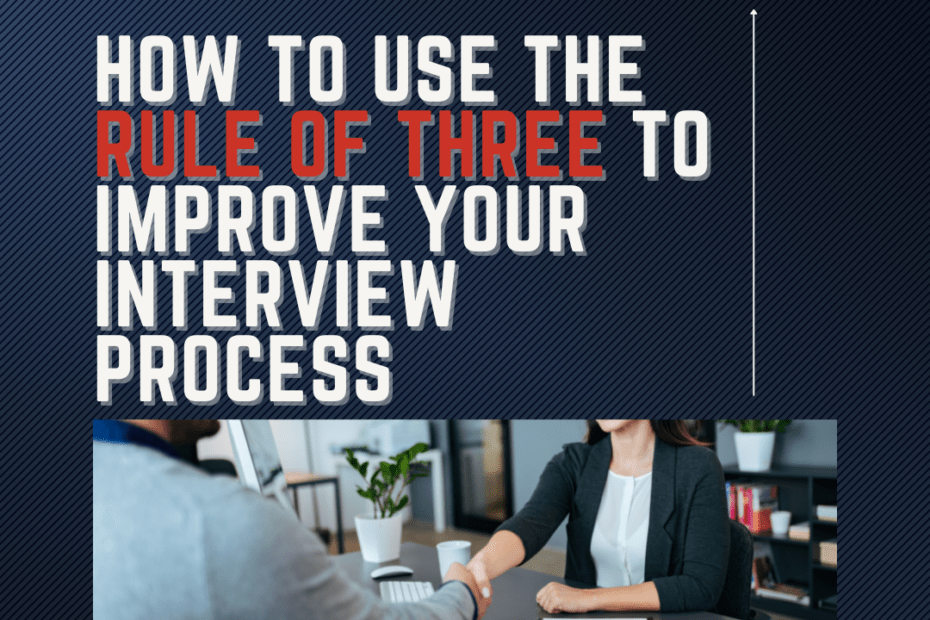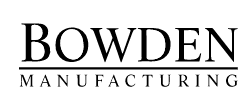You Need People, But Make Sure You Know What You’re Doing
Today, if you’re like most people, you’re both looking for people and trying to hang onto the ones you already have on your Team.
It’s unsettling to have orders and not be able to keep up…..especially when it’s because you’re running short on staff.
In most places you go, you’ll see “We’re Hiring!” signs at almost every business. If your business has a sign (and it probably does!), it’s important that you’ve got a solid process to determine who to offer a job. You may feel desperate for anyone, but just taking anyone who might say “yes” is a mistake Your business is too important and your Team’s time is too precious for them to waste energy with a bad hire….even in these crazy times.
How to build a solid process? Here’s the Rule of Three that will help ensure you’re giving yourself the best chance for success.
Make sure you’ve got at least three candidates.
As a human, you’re making decisions all the time. Unfortunately, we too often allow ourselves to be in a situation with less than three options on the table. That leads to weaker decisions.
With one interview candidate, it’s a yes-or-no question. Do you want this person or not? It’s usually an easy decision but isn’t a robust process.
With two candidates, it’s an either-or question. Do you want this one or that one? Even in that case, we rarely consider that maybe neither should join the Team. A pair is better than just one option but still doesn’t produce consistently good results.
Hitting three candidates is where the magic happens. By having that third option, your brain pattern expands dramatically. Suddenly, you’re caught up in the different aspects of each person and the process of weighing them out produces significantly greater outcomes.
Ironically, having many more than three candidates will start to become counterproductive as the number grows. If you’ve got more than four or five, you should probably narrow the list to your final three to make the best decision.
Make sure you interact with them at least three times, preferably in three different environments and/or situations.
Taking the time to engage with your candidates multiple times will help let the “crazy out of the can” if it’s in there. Most people can hold it together for a single interview session. As you ask them to interact in multiple ways (i.e. phone interview, Zoom interview, in-person interview, coffee shop interview, lunch conversation, etc.), you’ll learn a lot more about the candidates. Yes, it takes significantly more time, but it’s totally worth it. Don’t let first impressions win the day because you’re going to (hopefully) have this person on your Team for a long time.
Make sure you have at least three members of your Team engage with the candidate as a part of the intervirw process.
Building a process to involve your Team is crucial to a solid hire. Three is the minimum to include, but it could be as many as five or six. It’s a big help to have the folks engaging with the candidate be as diverse as possible in age, sex, race, and role. Two big points to remember: first, make sure everyone interacts with ALL of the candidates (if that’s not the case it negatively impacts the outcome), and second, make sure you listen to all the feedback from each member of your Team. It’s easy, especially as the Leader, to make up your mind before entering the discussion and it can derail the entire process. You certainly can have the veto power, but using it will limit both the effectiveness of the process and your Team’s role in adding a new member. You must stay open to the exploration your Team is making because it produces better decisions. Also, it’s likely your Team will be working more closely with the new Teammate than you will.
Final Thoughts
Even in these desperate times, it’s vital that you develop a solid process for hiring. Resist the urge to rush the process. Going slowly can prevent some bad outcomes and the right candidates will follow along with a professional and systematic way of operating. It sets the stage for how you’d like them to be as a part of your Team.
Good luck and here’s to your Manufacturing, and Hiring, Success!

